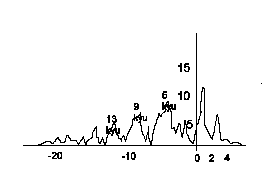 |
| Home | The NZGS | About Go | NZ Go Rules | Book Shop | Clubs and Contacts | Newsletter | History | Members | E-mail |
|
By Ray Tomes |
|
Anyone who has played go for some time will be aware that playing strengths change in the most amazing ways. Sometimes a player will improve by 2 to 5 stones in a few months, only to spend the next year with no further improvement. The player may then do another quantum level jump, only to stop again at the next barrier. The locations of these barriers are only slightly different for different players, although not all players stop at all barriers. Analysis of the Auckland Club records over a five year period shows quite clearly the location and 'thickness' of the barriers, and are so consistent that slight drifts in the club scale can be observed. This is in fact a good method of keeping a scale constant over a period of time, and even for keeping different clubs in the correct relative position when few games are played between clubs. Kageyama, professional 7 dan, refers in his book 'Lessons in the Fundamentals of Go' (which I strongly recommend to you) to these barriers. He places them at 12-13 kyu, 8-9 kyu, 4-5 kyu and 1-2 kyu, and refers to players who come to be regarded as permanent 6 kyus. Certainly it is the 4-6 kyu barrier which halts almost all players for a time, most falling victims to it from 6 months to 4 years! When players break through barriers, they often don't know what it is that they have learnt, and so cannot pass this informatin on. I think there are also barriers at 1 dan and 3 dan, but after that the barriers come so close together that it is just a slow grind to improve by fractions of a stone at a time. Graph of amount of time spent by players at different ranks.  Each unit represents one players average position over two months. Some 45 players have had their handicaps measured at some point in the five year period from September 1974 to December 1979. No-one has managed to get sampled on -7.0, as most players go through here like a rocket. Perhaps the kyu-dan break was also chosen at a place where there is also quite a large gap. |